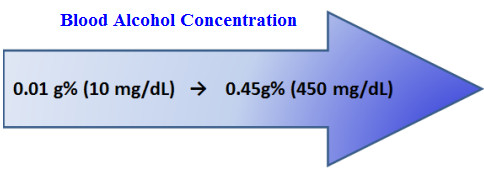Alcohol
The legal limit for intoxication is 80 mg/dl (0.08g%) therefore blood is the prefer sample type for the legal determination of ethanol. However, serum/plasma, are suitable specimens for the determination of ethanol for clinical indications.
Alcohol distributes into the aqueous compartments of blood; because the water content of serum is greater than that of whole blood, higher alcohol concentrations are obtained with serum as compared with whole blood. Experimentally, the serum-to-whole blood ethanol ratio is 1.18 (1.10 to 1.35) and varies slightly with hematocrit.

The rate of elimination of ethanol from blood approximates a zero-order process. This rate varies among individuals, averaging about 15 mg/dL/h for males and 18 mg/dL/h for females. The elimination rate is also influenced by drinking habits (e.g., alcoholics have increased elimination rates caused by enzyme induction).



